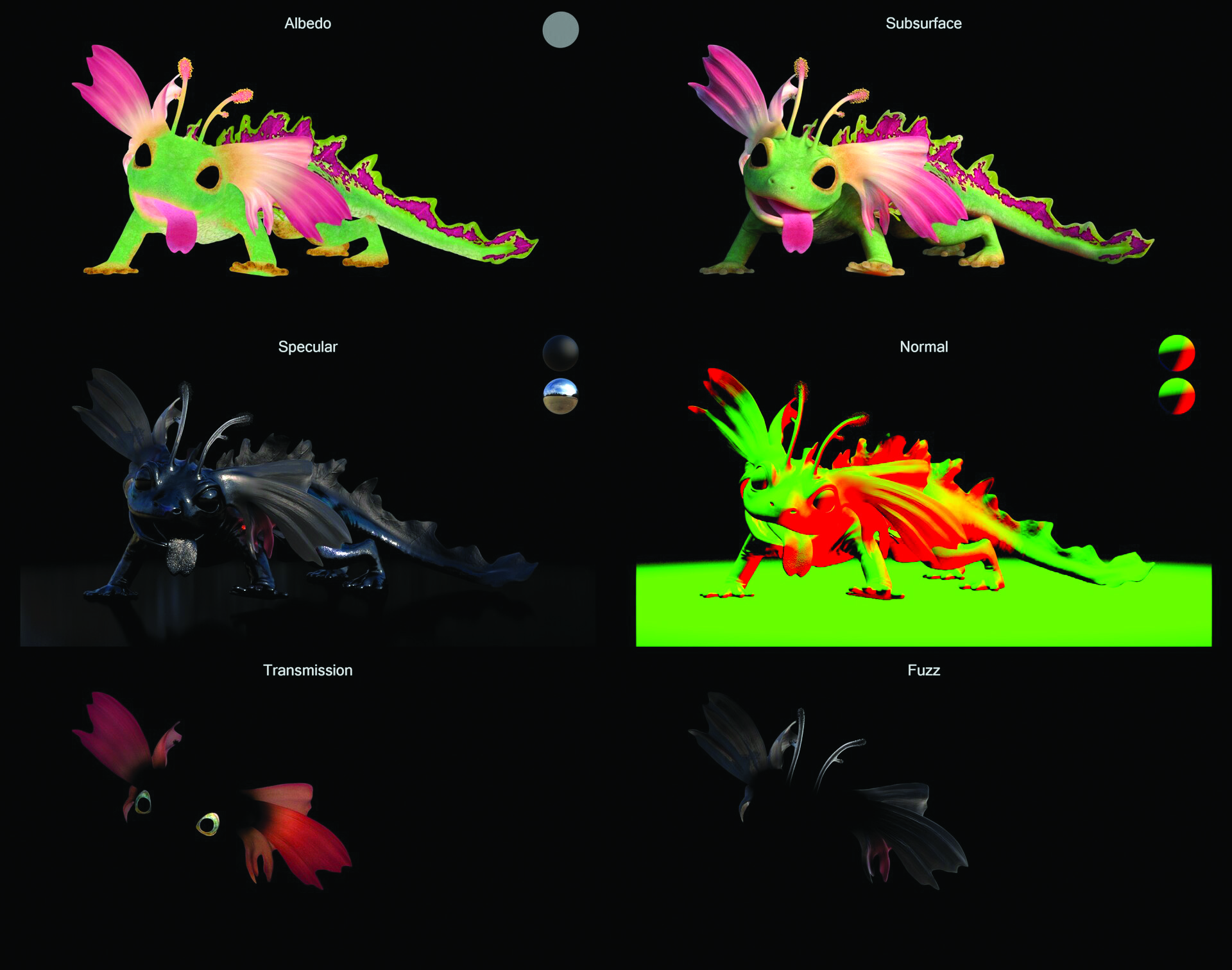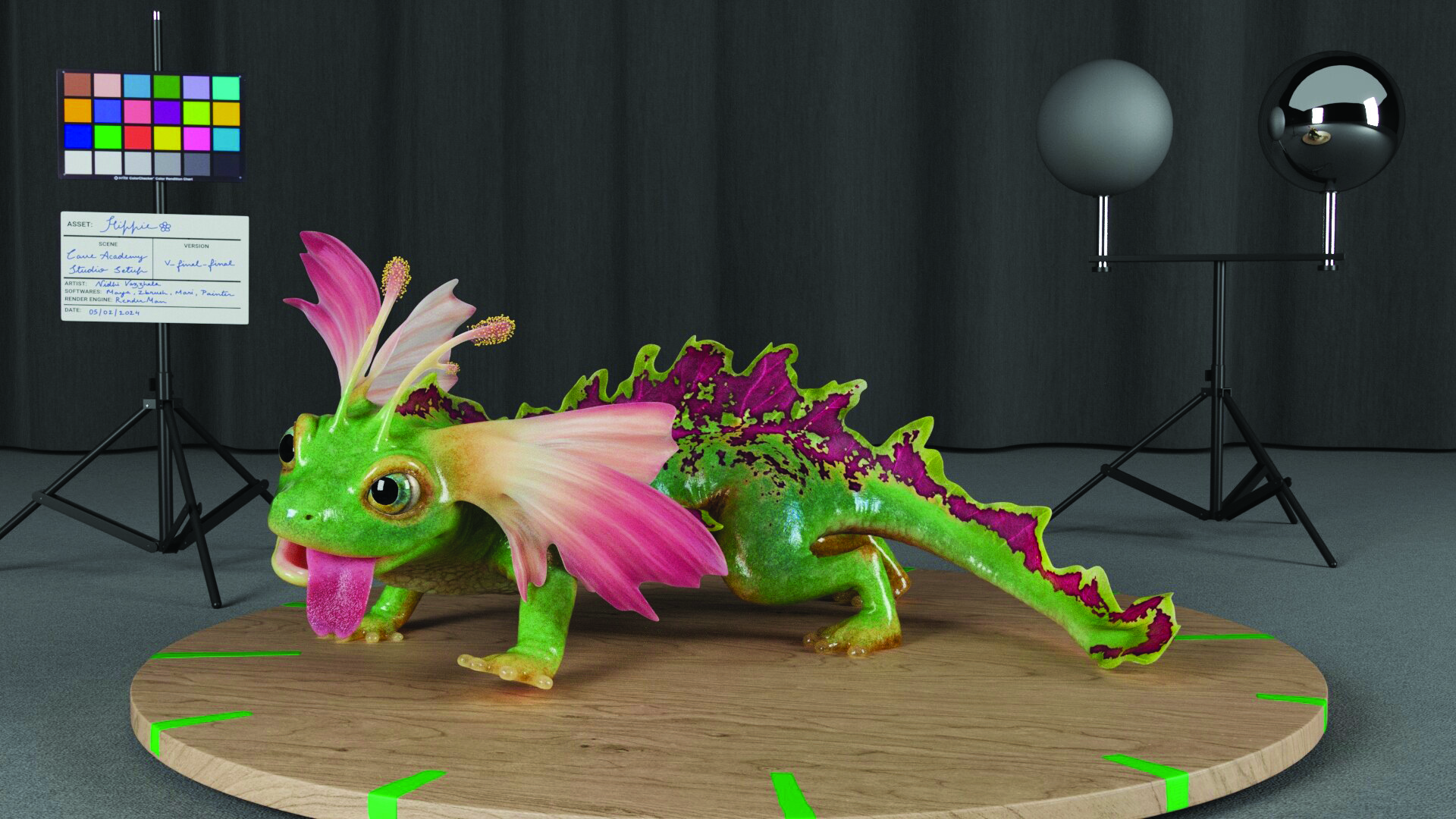Our Verdict
An interactive denoiser and XPU improvements further cement this impressive renderer’s position as one of the greats. That these changes largely improve render quality while reducing render times will be pleasant news to users.
For
- Next-level denoising
- Powerful interactive rendering
- Better non-photorealistic results
Against
- Still viewed as a niche renderer
- Documentation could be better
Why you can trust Creative Bloq
Price $595 / £480 per year
Company Pixar
Website Pixar.com
New features Denoiser enhancements, improved XPU features, production quality lighting, easier stylisation, new XPU camera tools, faster textures, USD improvements
Knowing that the journey for Pixar’s RenderMan software began 37 years ago feels mind-boggling – but it’s still at the top of its game and remains one of the best software for rendering available today.
The production renderer for animation and VFX work has helped to create breathtaking movies including The Lion King, Toy Story and Avatar. Even more impressive is that as of 2022, it had been used in over 500 films, including multiple Animated Feature Oscar winners. RenderMan is an industry-defining renderer. It does have competition though, notably in DreamWorks MoonRay (read our review).
But with RenderMan 26, the latest release, this production quality renderer continues to go from strength to strength. Featuring improvements to its interactive denoiser, XPU tool and plugin updates, RenderMan 26 is set to become increasingly popular as the first-choice renderer for numerous artists and studios.
The interactive denoiser

Denoising technology has evolved exponentially in recent years. Thanks to technologies such as Intel’s Open Image Denoise (as explained in our future of AI in film feature) and various renderer-specific implementations, denoising tools have not only improved rendering quality but also dramatically reduced render times. Before these developments, noise was reduced by throwing more samples into the scene. But nowadays, artists can leave the noise in the render and know it’ll be cleaned up in post.
RenderMan’s built-in denoiser, which was originally introduced in RenderMan 25, has received an upgrade that makes it available interactively in Katana and Blender when using the RIS rendering mode. Maya and Houdini users will be disappointed to hear that they’ll have to wait for a future release to enjoy this feature. While it’s still possible to make use of the denoiser there, it just can’t be done interactively.
Having that access to the machine learning-powered denoiser interactively further aids in removing any unwanted noise from every stage of the rendering process, both for tests and final production images. While the interactive version isn’t yet as good as the full offline denoiser, it’s getting there. It’s also possible to turn it off should you prefer not to sacrifice hardware resources.
For a long time, it’s been possible to remove noise in post-production using tools like Neat Video and DE:Noise, which added an extra step and additional costs that have made it prohibitive for some. Bringing denoising capabilities into the heart of the creative process serves to make them accessible for all.
XPU advancements make a difference

Another update to XPU is the expanded support for camera features. These include tilt-shift, lens aberrations, split diopter, and shutter controls that were previously only available with the production camera. Bringing these options into an interactive pipeline helps 3D artists get closer to the final look and feel before having to do any offline rendering.
RenderMan’s CPU / GPU hybrid renderer receives a selection of updates, which make it better and quicker than ever before. XPU isn’t ready for final production rendering yet, but it’s getting closer with every upgrade. This time around, we see sampling improvements made, plus an expanded lighting and camera toolset, as well as light selection.
As a result of the upgrade, all analytic light types and light filters are now supported. It’s often the case that interactive renderers have a reduced feature set compared to their offline counterparts. That’s still true for RenderMan, but the gap is most definitely closing. Having access to all analytic light types means that artists now have many more options, knowing their choices will work both interactively and with the final renderings.
Yet another performance improvement is that both XPU and RIS are now faster when creating and editing scenes
Adaptive sampling is now an option that directs samples to where they are needed most, not only improving the quality of the rendered image but also, at times, speeding up the process. Yet another performance improvement is that both XPU and RIS are now faster when creating and editing scenes utilising many instances and textures. This has the added benefit that artists don’t need to be quite so concerned with the complexity of their scenes.
Non-photorealistic stylised rendering was already a key part of what RenderMan had to offer, but now the toolset provides additional ways to express line work, hatching and toon effects. The Stylized Control system expands the range of stylisation available, in large part due to not being physically based like the existing toon shading tool. The line rendering system also gets new filtering controls, which now make it possible to render smoother lines.
All these changes will be a dream come true for any toon-style artists. Other renderers have toon shaders, but RenderMan is clearly trying to bolster its offering to become the go-to render engine for creating that style of image.
This content originally appeared in 3D World magazine. Subscribe to 3D World at Magazines Direct.

Thank you for reading 5 articles this month* Join now for unlimited access
Enjoy your first month for just £1 / $1 / €1
*Read 5 free articles per month without a subscription

Join now for unlimited access
Try first month for just £1 / $1 / €1
out of 10
An interactive denoiser and XPU improvements further cement this impressive renderer’s position as one of the greats. That these changes largely improve render quality while reducing render times will be pleasant news to users.

Paul is a digital expert. In the 20 years since he graduated with a first-class honours degree in Computer Science, Paul has been actively involved in a variety of different tech and creative industries that make him the go-to guy for reviews, opinion pieces, and featured articles. With a particular love of all things visual, including photography, videography, and 3D visualisation Paul is never far from a camera or other piece of tech that gets his creative juices going. You'll also find his writing in other places, including Creative Bloq, Digital Camera World, and 3D World Magazine.

